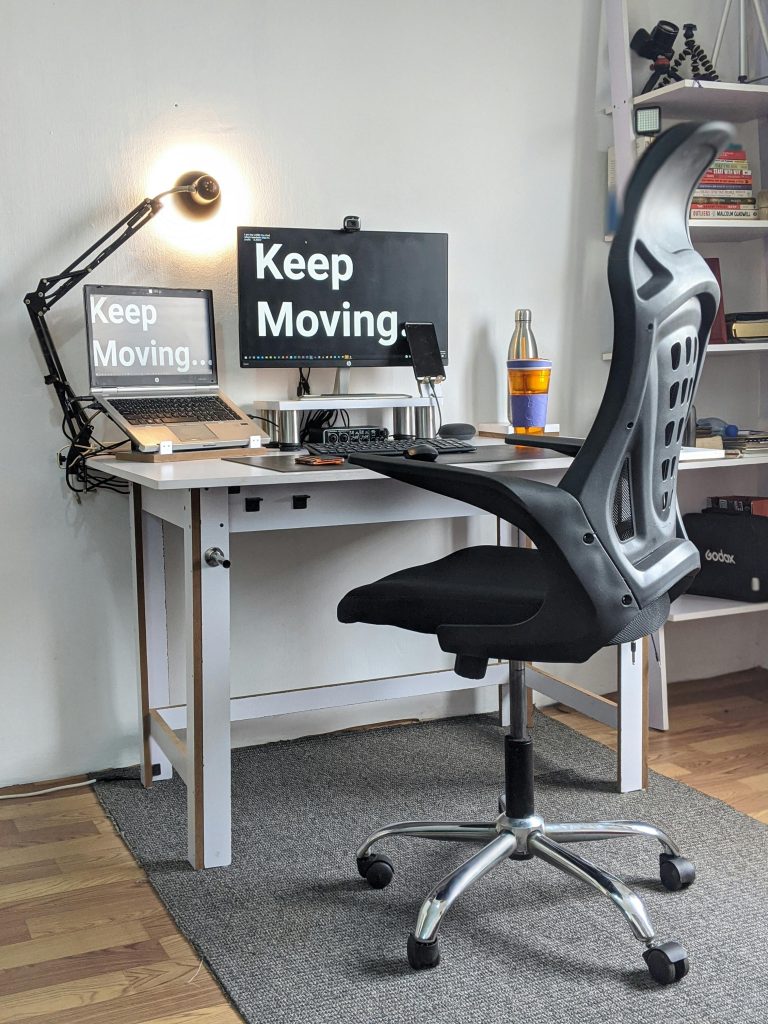Challenges and solutions for mitigating common MSK disorders
The shift to remote work has brought numerous benefits, such as flexibility and reduced commuting time. However, it has also led to a significant rise in musculoskeletal disorders among employees.
MSK disorders, which include conditions affecting muscles, bones, joints, and connective tissues, are increasingly common among those working from home without proper ergonomic setups. Addressing these issues is crucial to maintaining a healthy and productive workforce.
Challenges of MSK disorders in remote workforces
1. Lack of ergonomic workspaces
Many remote employees find themselves working in non-traditional environments, such as kitchen tables, couches, or even beds. These setups often lack the ergonomic support that traditional office furniture provides, leading to poor posture and increased strain on the neck, back, and shoulders. Over time, these conditions can contribute to the development of MSK disorders, such as lower back pain, neck strain, and repetitive strain injuries.

2. Prolonged sedentary behaviour
In an office environment, natural breaks occur through meetings, interactions with colleagues, and moving between different areas. However, remote workers might sit for extended periods without taking sufficient breaks, leading to prolonged sedentary behaviour. This lack of movement can contribute to stiffness, muscle fatigue and a higher risk of developing MSK disorders.
3. Limited access to on-site resources
In a traditional office setting, employees often have access to ergonomic assessments, adjustable chairs and other resources that support a healthy work environment. Remote workers, on the other hand, may not have these resources readily available. Additionally, they may lack access to on-site wellness programs, physical therapy and ergonomic equipment, making it harder to address MSK issues proactively.
Solutions to mitigate MSK issues
To effectively manage and mitigate MSK disorders in remote workforces, employers and employees must implement strategies that promote ergonomic work environments, regular movement, and access to healthcare resources.
1. Ergonomic adjustments and education

- Promote proper desk setup
One of the most effective ways to prevent MSK disorders is to ensure that employees have ergonomically sound workstations. Employers can provide guidelines on setting up a home workspace that promotes good posture and reduces strain. Key recommendations include positioning the computer screen at eye level, ensuring that the chair supports the lower back, and maintaining a 90-degree angle for the elbows while typing.
- Encourage Use of Ergonomic Tools
Providing employees with resources or stipends for ergonomic equipment can greatly reduce the risk of MSK disorders. Items such as adjustable chairs, laptop stands, external keyboards, and mice help maintain neutral body positions and reduce physical strain. Employers can also partner with ergonomic suppliers to offer discounts on these essential items. - Conduct Virtual Ergonomic Assessments
Many organisations have begun offering virtual ergonomic assessments, where experts can evaluate employees’ home workstations via video calls. These assessments provide personalised feedback and recommendations, ensuring that employees can make necessary adjustments to their setups to reduce the risk of MSK issues.
2. Encourage movement and breaks
- Promote regular movement
Encouraging employees to take regular breaks is crucial in reducing the risk of MSK disorders. Short breaks every 30 minutes to stand, stretch, or walk can help alleviate muscle fatigue and improve circulation. Employers can remind employees to move regularly through calendar notifications or wellness programs. - Incorporate stretching routines
Stretching exercises that target common areas of discomfort, such as the neck, shoulders, back, and wrists, can help reduce the risk of MSK disorders. Employers can provide guidelines or videos demonstrating effective stretching techniques that employees can easily incorporate into their daily routines.
3. Utilise Telehealth options

- Virtual physiotherapy
- Telehealth services have become an invaluable resource for remote workers dealing with MSK issues. Many healthcare providers now offer virtual consultations, allowing employees to receive assessments and personalised exercise programs without leaving their homes. These sessions can be tailored to address specific MSK concerns and provide ongoing support and guidance.
- Remote ergonomic consultations
In addition to physical therapy, telehealth platforms can also be used for ergonomic consultations. Experts can provide advice on improving workstation setup, posture, and work habits, helping employees reduce the risk of developing MSK disorders. These consultations can be scheduled regularly to ensure that employees maintain healthy work environments.
Read more on the benefits of investing in employee MSK health!
Conclusion
As remote work continues to be a prevalent mode of operation for many organisations, addressing MSK disorders is essential to maintaining a healthy and productive workforce.
By understanding the challenges faced by remote employees and implementing solutions such as ergonomic adjustments, regular movement, and telehealth options, employers can help mitigate the risk of MSK disorders and promote a healthier, more supportive work environment.



